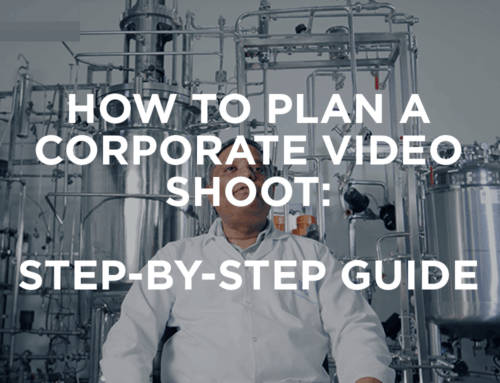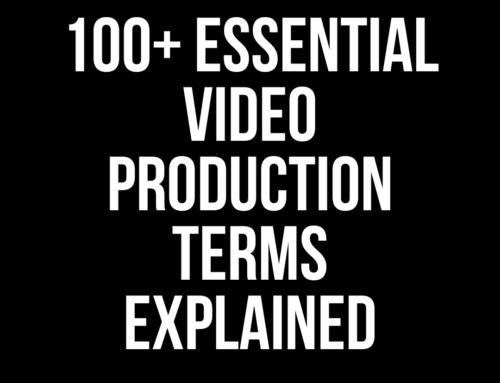The future of social media is video. Starting in the last decade, video has become the fastest-growing digital force. With more and more experts declaring the visual medium the way forward in video marketing, we can expect its adoption to increase.
Why video? As a video content marketing agency, it’s a question we often get asked.
Why do 92% of marketers place video at the heart of their marketing strategy – increasing from 78% back in 2015? The answer is simple: time. Video glues eyes to screens, significantly increasing your ROI. At least, according to 88% of marketers. For instance, in 2021, it is estimated that the average person will watch 100 minutes of online videos per day, increasing from 84 minutes in 2019. That’s a 19% jump!
The logic is simple. As a visual species, videos grab our attention, sticking in our memory. With graphics and narratives, presenters and music, video has the power to make your advertising campaign bloom. Little wonder Mark Zuckerberg has declared video a critical part of our future.
Whether it be presentations or vlogs, tutorials, webinars or customer testimonials, video has the flexibility to cater to a broad customer base. However, you need to know the latest video marketing statistics available to ride the wave of video popularity.
So, read on.
Key video marketing statistics for the United Kingdom
- In 2021, the average person will watch 100 minutes of online video content per day
- 92% of marketers now say that video is at the heart of their marketing strategy
- 6 out of 10 people prefer watching online videos to television
- By 2021, 82% of all internet traffic will be video
- Brand recall from video is 85% higher than text
- 72% of customers would rather learn about products and services via video
- Video marketing increases qualified leads by 66%
- 93% of marketers have gained new customers from video marketing
- Social videos are shared 1200% more than text and images combined
- The most popular video length for video ads is 15 seconds, accounting for 32% of all ads.
- 70% of marketers predict making significant increases to their video marketing budgets in 2021
Why is video content so important?
Before we dive into specifics, what’s the view from up high?
Media is changing rapidly. Such observations aren’t news, but few realise just how rapidly.
6 out of 10 people prefer online videos over television. These preferences are leading mobile video consumption to leap 100% every year – year on year. YouTube is now the second most popular site, with 1 billion hours of video being viewed on the platform daily.

Meanwhile, a Facebook exec predicts that the site will transform into an all video and no text platform this year.
Marketers are taking note. With 82% of consumer internet traffic destined to become online videos by 2021, businesses are increasingly adopting video as the core of their marketing. Given that consumers remember a phenomenal 85% more of a message delivered via video than text, the medium is also more effective. Nor is the video phenomenon confined to consumers. 59% of execs report preferring video to text, mirroring the 72% of customers who’d rather learn about products and services via video.

Why is video so effective in marketing?
Video marketers are witnessing higher ROI and more qualified leads – per year they get 66% more. Moreover, 93% of marketers report landing new customers due to social video. With all the latest video technology at their fingertips and an evermore captive audience, the benefits are astounding.
Back in 2016, only 61% of businesses used video as a marketing tool. Now in 2021, 92% call it a vital aspect of their marketing strategy. With businesses developing an even greater understanding of how to utilise video, more and more video marketers are citing the positive ROI as a major asset – up 54% since 2015.
Considering this trend, 99% of video marketers are using video in their strategies will continue to do so in 2021. Of the remaining fraction holding out, 54% report a desire to begin video marketing in the coming year. According to Design Rush, 88% of marketers were satisfied with the ROI of their video campaign.
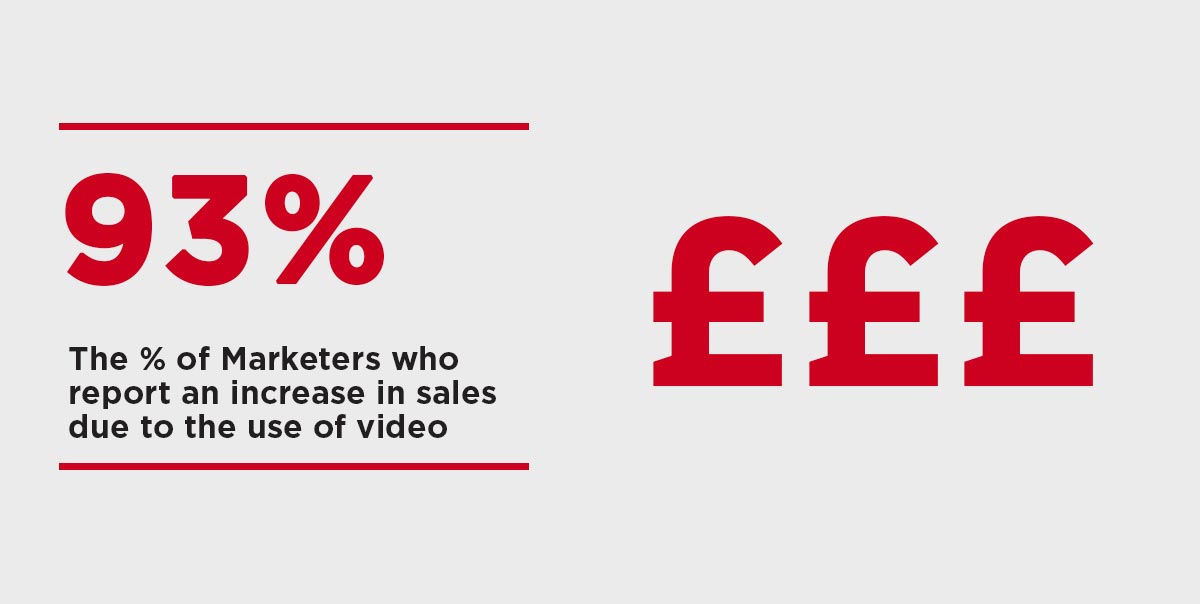
The effect of Covid-19 on video consumption
With 2020 marking a significant shift in the digital world, video marketers are taking note. Increasingly people are working from home, making real-world marketing less relevant than ever before. Therefore, 91% of marketers say that the pandemic made video ever more vital to their brands.
Video is a way of bringing the real-world into the home. Only 26% said they would use video less in the coming year. Meanwhile, a sizable 40% of video marketers surveyed found their video creation plans to be affected by the pandemic.
Given the widespread lockdown rules, unsurprisingly, a remarkable 96% of consumers report seeing their video consumption increase. 68% found the pandemic was a primary reason behind the growth.
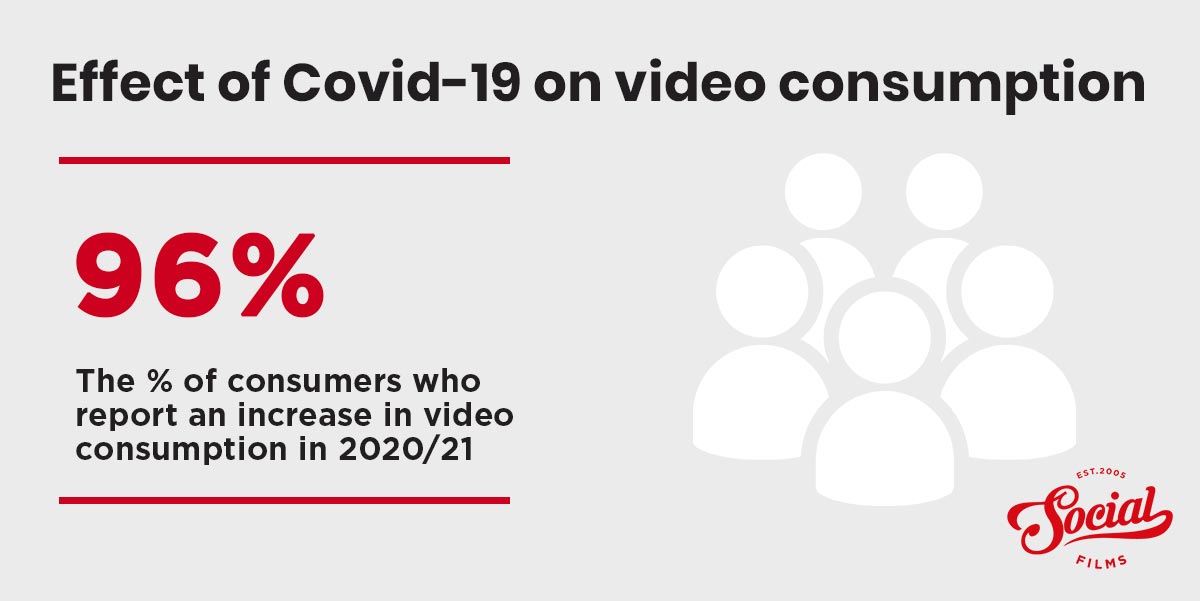
85% of internet users watch online video content monthly. Amongst 25–34-year-olds, views were the highest, with a definite gender split – adult males watched 40% more video than females. 48% of consumers wish for videos to reflect their interests, including products and services. They don’t want to be fed information, but to have choice and interactivity in what they view. However, personalisation can go too far. Only 12% reported wanting videos to use their name and information.
Money follows the consumer. As we advance, around 60% of marketers expect changes to video marketing budgets, with approximately 70% predicting significant increases. As businesses come out of lockdowns and marketers get their teeth in to 2021, all avenues for consumer engagement are vital to sparking the recovery.
What is the best length for a video?
Despite the perception of declining consumer attention, ads are surprisingly getting longer.
From Q3 2018 to Q3 2019, the number of video adverts 30 seconds in length increased by 11%, rising to 66%. Videos under two minutes receive the most engagement, with 33% of viewers stopping a video after 30 seconds. However, the most popular ad length is 15 seconds, accounting for 32% of all ads. Fewer than 1% were less than six seconds.
Whilst metrics like these tend to be used as a gold standard that guides content creation, marketers should focus on the quality of the content first. After all, it’s not the duration which creates engagement, but the quality of the content itself.
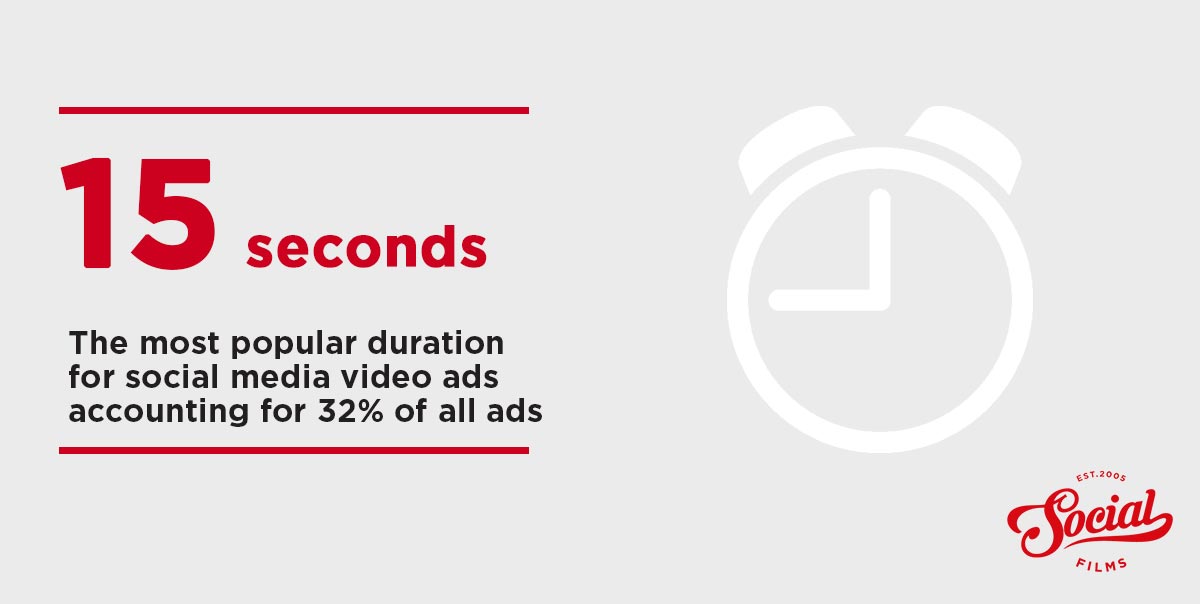
Table of Contents
Why are short videos more effective?
Table of Contents
Statistically speaking, short videos are more effective from an engagement point of view because there is a greater chance of viewers watching right until the end. Social media audiences have become accustomed to short, bite-sized content, which is easily scrollable and quick to watch and share.
That doesn’t, however, mean that the demand for longer video isn’t there, nor that shorter video content is more effective at driving conversions. For marketers, much depends on where the customer is in their buying cycle. It goes without saying that effectiveness depends on factors far more meaningful than simply duration. Marketers whose measure of effectiveness is completion rate will likely seek comfort in shorter video lengths, however they may be disappointed by their sales results.
In 2021, marketers should therefore place greater emphasis on the relevance of the content itself. Marketers who have the most targeted content, who understand their buyer the best and present their offer in the most entertaining way will always win regardless of duration.
Expect to see more B2B video in 2021
In the past, B2B video marketing has often been undervalued as a strategy. Brands have struggled to find their place in an increasingly social and informal world.
By 2019, seeds of change were already starting to be seen as LinkedIn began to up its video game. Now in 2021, spurred on by the Pandemic, B2B marketers are being forced to look for more creative ways to communicate their offering.
That’s why 41% of B2B marketers are looking into video to increase revenue, with 22% – at the medium’s forefront – exploring podcasting and live streaming. For those already using video in their B2B strategies, the results are equally impressive: 73% of B2B marketers note that video increases their ROI. Consider, eight out of ten people have purchased software following a brand video.
In 2021, we expect the growth rate to accelerate faster than B2C markets as B2B marketers largely play catch up with consumer trends.
With customers increasingly spending time on social platforms, B2B marketers must address their audiences as “normal human beings who like the same things as everyone else”. Those that adopt a video marketing strategy that focuses on adding value rather than front-loading content with excessive corporate messaging, will see the fastest results and the greatest returns on their investment.

Live video is gaining more momentum
Back in 2019, the idea of going live was terrifying for most marketers. Fast forward to 2021 and we’ve all become used to facing the camera first thing in the morning when we’re not looking our best.
In the wake of the Pandemic, the fear of live video hasn’t vanished, but it has certainly diminished.
Live streaming has also become easier and will continue to do so in 2021. With Facebook and Instagrams’ live streaming options becoming increasingly popular, video marketers are taking to these platforms to host real-time videos. 57% of video marketers report live video use, with the majority opting for Facebook (34%) over Instagram (13%).
The challenge, is not longer technical, but one of overcoming personal fear.
Whilst many brands will find ways to add gloss and polish to their live videos, it is important to reflect on an unexpected side effect of the ‘not so perfect take’ – Authenticity. Brands who are brave enough to expose all will be in a unique position to gain trust and build closer relationships with their audiences in a way that we’ve never experienced until now.
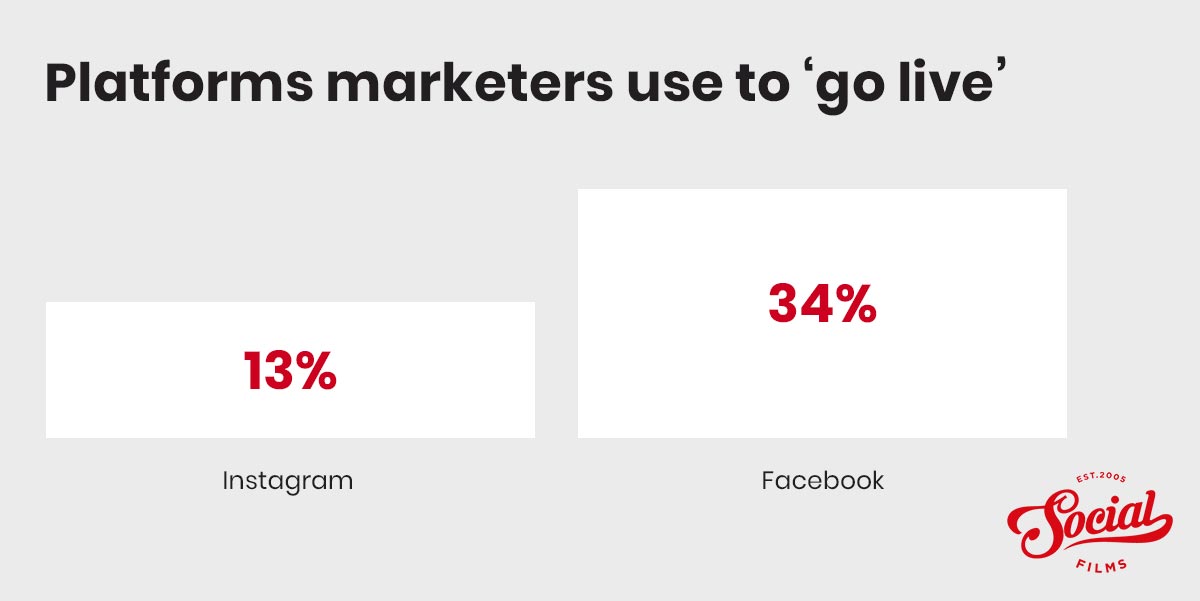
Most popular social media apps in the UK
Whilst much has changed throughout 2020, expect the the social media landscape in 2021 to be largely dominated by the same names.
- Facebook still remains the most popular social media platform in the UK, with more than 44.8m active users.
- YouTube follows second with more than 35.6m users in the UK.
- Messaging services including WhatsApp & Facebook Messenger account for the remaining top 5 positions of most used services.
- Instagram follows closely behind Facebook with more than 30.6m users.
- TikTok rose rapidly to 3.7m users in the UK in 2020.
In 2021, it’s time for marketers to turn their attention to what it is their consumers want? For decades, this question has driven marketing, and now it’s driving video creation. Moreover, given the broad social media landscape, where are consumers watching?

Facebooks video marketing capabilities remain unrivalled, but for how long?
Whilst questions loom over what the future holds for Facebook as the US cracks down on Big Tech censorship and privacy, Facebook has heavily invested in the future of video. With over 8 billion daily views, the results are paying off. The purpose-built video platform sees 75 million daily visitors, and video promotions now equal photo promotions on the site. Rapidly, it is becoming the go-to site for social marketers, with 81% of businesses using Facebook. Considering social videos are shared 1200% more than text and images combined, the race to master video marketing has only just begun.

YouTube will start to dominate search in 2021
Expect to see major shifts in the way we search in 2021 as video begins to fulfil our information and entertainment needs better than text based content.
Videos are as much a source of information as entertainment. 65% of YouTube users turn to the video platform to solve problems. If they need to fix their home or to learn how to change a fuse, they don’t Google it; they YouTube it. 86% of viewers said they frequently used YouTube to learn new things. Considering over 1.9 billion people access YouTube – one-third of the internet – the potential market is unparalleled.
Expect to see more video on Twitter in 2021
Meanwhile, the effects of video are spilling into previously text-based platforms. Twitter users are asking for more video content. In particular, 45% of Twitter users wish to see more celebrity videos. Overwhelmingly such users are accessing video content via their mobile device, comprising 90% of all views.
The one’s to watch in 2021
Other smaller social media sites are also powering video forward at an alarming rate. Snapchat – an app built for video – sees 10 billion videos every day. While newcomer TikTok has more than 1 billion daily videos. Even LinkedIn has embraced video campaigns, noting a view rate of 50%. LinkedIn has already surpassed Twitter and Instagram, becoming the third most popular video marketing platform in social media. With access to professionals globally, two-third of marketers reported planning to use the site in 2020.
Into the Future
Emerging from the pandemic is a changing business landscape. But, in truth, the events of 2020 have only accelerated the inevitable. Video will become the content king. With increasing numbers of marketers waking up to consumer demand, new and innovative video marketing campaigns are being developed.
Video promises marketers greater reach. Platforms with billions of users span global markets. The medium itself offers a myriad of possibilities, whilst being more effective than simple text-based campaigns.
The only question remaining is, how are you going to seize the opportunity?
About the Author

Tom Bendix is the founder of Social Films, a video production company based in London, UK. With more than 15 years video marketing experience and over 28m video views worldwide, he helps marketing teams to plan highly effective video campaigns that turn clicks in to profit.
Tom can be reached via hello@socialfilms.co.uk.
Sources
https://www.oberlo.co.uk/blog/video-marketing-statistics
https://biteable.com/blog/video-marketing-statistics/
https://www.thinkwithgoogle.com/intl/en-ca/marketing-strategies/video/self-directed-learning-youtube/
https://blog.hubspot.com/marketing/state-of-video-marketing-new-data


